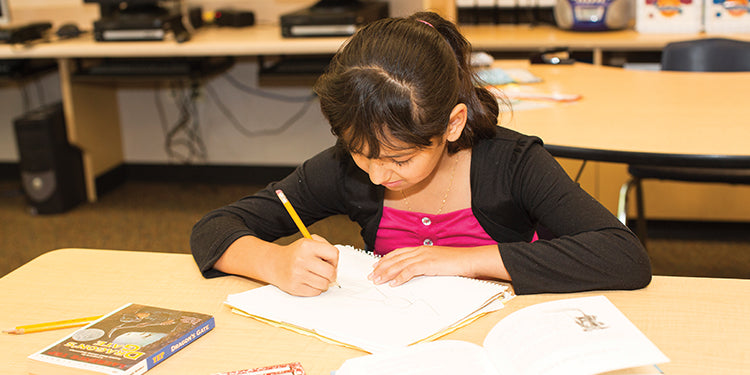
This is a guest blog post by Dr. Geraldine Haggard, who is a retired teacher, Reading Recovery teacher leader, author, and university teacher. It is the second in a series about using leveled books to teach the importance of good citizenship and classroom behavior. To read the first post, click here .
In this series of blog posts, I have been looking at the use of leveled books in the early grades to help young students develop positive behavioral skills. Today’s example text is At School , a part of the Oral Language Development Series that focuses on different language structures for young readers.
Book Two: AT SCHOOL
Use the Elmo to display the front cover of At School. The following questions can be used to guide the reading:
- Where are the children on the cover?
- What are they doing?
- Do you think they are having fun?
Display the title page on the Elmo and ask the following questions:
- W here is Danny?
- Do you think he is having a good time?
Remind the children that they have a classroom library and also a library used by all children in the school:
- How do good friends act in the library?
- Why is this important?
- What happens if one child is not a good friend in the library? (The boy would not be able to read and enjoy reading. The librarian might have to leave someone he or she was helping. The librarian’s storytime reading would be interrupted, etc.)
Pages 2 – 5:
The sentence structure in the book is "Danny likes ____." Pause as you come to the last word in each sentence. Ask the children what they can do to determine the word (beginning sound, photo context). Reread the sentence together, emphasizing the word 'likes:'
- Are there times when Danny participates in activities with other children?
- How are these times different?
- Why should Danny be a good friend when he works with others?
Pages 6 – 7:
Ask the students to share acts of friendship that they have seen in the lunchroom and on the playground:
- Is Danny still in the classroom?
- Is it still important for him to be a good friend on the playground and the lunchroom?
- How is being a good friend in these two places like being a good friend in the classroom?
- What might happen on the playground and in the lunchroom if he was not a good friend?
Page 8:
Conclude the session by sharing the last page on the Elmo. Remind the children that they have discussed the importance of friendship throughout the school:
- Which of the photos in the first four do you like best? Ask the children to raise their hands when you share the four: reading, writing, math, and music.
This is the end of part two in this series of using leveled books to teach the importance of good citizenship and classroom behavior. Click here to read the next installment. You can subscribe to our blog in the upper right sidebar to get new posts delivered to your inbox.
~~~
Geraldine Haggard is the author of several books from our Kaleidoscope Collection . She spent 37 years in the Plano, TX school system. She currently tutors, chairs a committee that gifts books to low-income students, teaches in her church, and serves as a facilitator in a program for grieving children.
Click the left image below to download an information sheet with key features about the Oral Language Development Series , which contains the book mentioned in this post. Click the right image below to download an information sheet with key features about the Kaleidoscope Collection , which includes books that Geraldine Haggard has authored.
















































![6 Fun and Easy Activities to Practice Sequencing [Grades K-1]](http://www.hameraypublishing.com/cdn/shop/articles/Red_Typographic_Announcement_Twitter_Post-5_bf1ae163-a998-4503-aa03-555b038d1b76_600x.png?v=1689961568)
![Leveraging Prior Knowledge Before Writing and Reading Practice [Grades 1–2]](http://www.hameraypublishing.com/cdn/shop/articles/Red_Typographic_Announcement_Twitter_Post-4_600x.png?v=1689961965)




